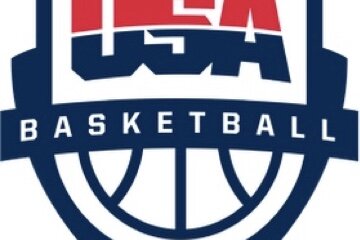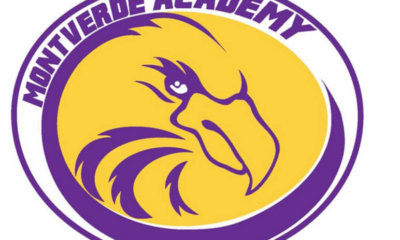Cordero Barkley, director of the Wisconsin Purple Aces, couldn’t have imagined he’d be in his current position.
“I was doing the Nike circuit with a team out of Milwaukee, and my 17u team was done and I was looking for a new challenge,” said Barkley, who played collegiately at Wisconsin-Green Bay. “My wife (Erin) said you should try girls basketball and I was like, ‘Uh …’
“And here I am seven or eight years later, still in the space. So I got my start as an assistant with my wife, she was the head coach of the group.”
Eventually, Mark Demerath, who had guided the club for 25 years, sought a successor.
“Mark was looking at who he was leaving the program with and he came to Erin and I,” Barkley remembered. “He asked what would you do differently, how would you run the program if we decide to leave? And we had a bunch of ideas and he says, ‘All right, let’s do it.’ We started the process of transitioning the program which eventually led to me being the director which was announced last year.”
Barkley didn’t need to make major changes. After all, the Purple Aces had long been successful under Demerath’s leadership. Barkley did, however, have a distinct tack he preferred when discussions began about the direction he’d like to take the program.
“Let’s change the standard for what we do as far as skill development in the entire program – with the youth leading it,” Barkley said. “The 2020 group has been the standard-bearer for the program. Looking down the pipeline, all of our teams reflect what we wanted to do. We have more kids who want to play college basketball, and we have more kids that hold each other accountable for getting in extra work.
“We tell our coaches you can’t just show up and scrimmage. Seventy percent of our practices have to be dedicated to skill work and drill work. A lot of our stuff is 3-on-3, small group work, more reps. We come to practice with a purpose. Our parents and kids seem to value that; not only getting better for your my high school team but we mention how all of these reps end up in totality when you get to college. You’ll know your defensive concepts and you’ll have more reps than a lot of the kids, even if they come from bigger programs. You’ll be more skilled and more prepared to play.”
Barkley’s overarching theme is clear: He wants each girl to “set the standard.” That goes for everything you do. Within the Purple Aces, the players themselves are responsible for setting those standards and guiding the younger players to reach, or exceed, them.
“We talk about, ‘You want to be a queen.’ That’s the standard. You’re always preparing for your next interview, and you never know who’s watching,” he said. “We talk a lot about not only the basketball player but the person and developing them into that queen mindset.
“You’ll hear us talk about on the court ‘being a boss’. We’re just giving them that mentality that it’s OK for you to lead and be confident and act as a queen, and that’s the standard you should hold people around you to.”
And that holds true for off-the-court activities as well. The Purple Aces draw players from Milwaukee, Madison, Green Bay and many points in between. And because of that they practice in Fond du Lac, which, as Barkley notes, “is an hour away from everybody on our team.” So when Fond du Lac was impacted by flooding, the players chose to do a community service project that supplied items to the local Salvation Army.
“Each team does a community service project,” Barkley said, “and the girls themselves have to come up with what they’re going to do.”
It is no surprise that, Barkley said, “people are starting to see the value of what we do.” That doesn’t mean, however, that the Purple Aces are aching to expand. They have seven teams, one per age group, and those numbers aren’t likely to change in the immediate future.
“That’s a great question and we’ve talked about it. In the right situation I could see us growing,” he said. “If there was a situation where we could merge with the proper program and still give girls the opportunity to play and develop and get more space, I could see that. But if you go back to the origins of AAU, it wasn’t big business, and at its best it was about getting kids together and having that regional pride. We have a group of coaches and the way our program is set up, we want to stay with that. I don’t take a dime out of the program; I’m blessed with a good day job. It will never be a business where I need a bunch of teams to support the program. In the right circumstances we would grow if it allowed us to develop kids and put out a good product. But we also really enjoy this model where we have one team per age group and it means something to be an Ace.”
So who are some of the top Aces right now? Here’s Barkley’s take, starting with the 2020 class:
Jaddan Simmons, 5-9, G. “She’s got a ton of offers (including Arizona State, Utah, Wisconsin, Illinois, Nebraska, Kansas State and many mid-majors). She’s the best two-way player in the state. A fierce competitor, super athletic, high IQ, can score at all three levels. But she takes so many points off the board because she’s so competitive defensively.” Simmons’ father is Jason Simmons, defensive backs coach for the Green Bay Packers. “Everything in their household is a competition. She’s one of the best kids I’ve been around. She gets it.”
Kendall Renard, 6-2, F/C. She has committed to Green Bay. “Green Bay got a kid whose best basketball is in front of her. Can shoot the three, can score over either shoulder in the post and is actually really, really good defensively. I switch 1 through 5 with her. She’s never given up points in pick-and-roll action. Very athletic for her size and strong, too. She can go right or left off the dribble on the wing and cross you over, use a Euro step.”
Anna Mortag, 6-0, wing. Has offers from Green Bay, Milwaukee, Indiana State, Illinois State and IUPUI. “Super athletic, can touch the rim. Her recruitment is blowing up right now. By the end of summer I’d venture to guess she’ll have some Big East, some Power 5 schools. She can score at all three levels, can shoot the 3, has a really good midrange game. She’ll post you up, and she can get to the rim with either hand. But everybody can’t believe how much she’s (improved) on the defensive end.”
From the Class of 2021:
Carley Duffney, 5-11, G/F. “She’s getting a ton of Division I interest, from all levels. She’s really, really athletic – a state-level track athlete. She can drive and score with either hand, and has a great feel for the game. She’s really been focused on shooting from the perimeter. We totally expect her recruitment to progress.”
Emma Anderson, 6-2, PF, from Menominee, Mich. “She’s more of a stretch 4, and she (plays) perimeter and post equally. Shoots the 3 really well; can drive, pass and post. She’s getting a lot of mid-major and high-level D2 interest.”
From the Class of 2022:
Emma Krueger, 5-7, and Emma Lebeck, 5-10. “Krueger won a Division I state title. I call her the honey badger. She’s like a pit bull. At the Oktoberfest (in Chicagoland in 2018) she was the second-leading scorer behind Jaddan. She’s talking to a ton of D1 schools already. Can shoot the 3, put the ball on the floor, very crafty for her size and a good athlete. Lebeck can shoot the 3, can score at all three levels, very skilled, high IQ kid.”
Tony Bleill is in his seventh year as a columnist for Blue Star Media. He previously spent 13 years as the Illinois women’s basketball beat writer for the Champaign News-Gazette. He lives with his wife and three daughters in Illinois.






